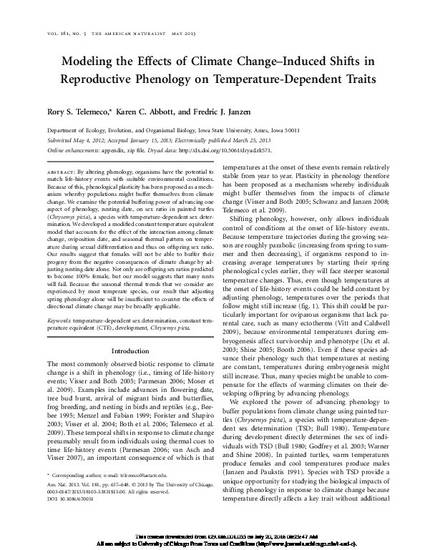
By altering phenology, organisms have the potential to match life-history events with suitable environmental conditions. Because of this, phenological plasticity has been proposed as a mechanism whereby populations might buffer themselves from climate change. We examine the potential buffering power of advancing one aspect of phenology, nesting date, on sex ratio in painted turtles (Chrysemys picta), a species with temperature-dependent sex determination. We developed a modified constant temperature equivalent model that accounts for the effect of the interaction among climate change, oviposition date, and seasonal thermal pattern on temperature during sexual differentiation and thus on offspring sex ratio. Our results suggest that females will not be able to buffer their progeny from the negative consequences of climate change by adjusting nesting date alone. Not only are offspring sex ratios predicted to become 100% female, but our model suggests that many nests will fail. Because the seasonal thermal trends that we consider are experienced by most temperate species, our result that adjusting spring phenology alone will be insufficient to counter the effects of directional climate change may be broadly applicable.
Available at: http://works.bepress.com/fredric-janzen/37/

This article is from The American Naturalist 181 (2013): 637, doi: 10.1086/670051. Posted with permission.